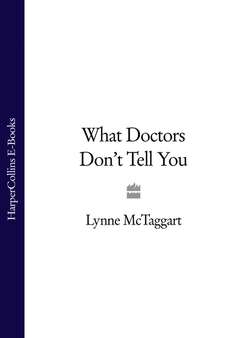Читать книгу What Doctors Don’t Tell You - Lynne McTaggart, Lynne McTaggart - Страница 24
BIOPSIES
ОглавлениеWhen the mere image of a body part won’t yield up the problem, doctors resort to nicking off a piece of you and studying it under the microscope. These types of tests include those in which one or more of the body’s tissues or fluids are withdrawn for examination, such as biopsies, bone marrow aspiration or spinal tap (also called lumbar puncture). There are four types of biopsies, ranging from removal of a few cells to excising a good-sized chunk with a scalpel or through the use of an endoscope with a tiny set of forceps, for those body parts conventional methods can’t reach. Even such a seemingly simple test as a tissue sample is not without risk. About a fifth of lumbar punctures lead to injury. Although it had always been assumed that injuries occurred when a junior doctor carried out the procedure, new evidence now finds that mistakes occur across the board, even with very experienced practitioners.134
Spinal taps have also been used to diagnose children with bacterial meningitis, the disease’s most dangerous form. But research now shows that, with spinal taps, children are 30 times more likely to develop herniation, a catastrophic complication of bacterial meningitis, with a high risk of death or damage.135
As for biopsy, when a sample tissue is being removed to help diagnose suspected cancer, certain types have a terrible batting average. For instance, biopsy of the prostate, one of the most common, is wrong in one of four cases, even when multiple tissue sites are taken.136 Breast, liver, kidney, lung, pancreas and lymph node (sentinel node) biopsy results all have high rates of false-positives and -negatives. Like mammograms, biopsies aren’t discriminatory and cannot distinguish between benign and malignant tumour cells.137
As with all medical tests, biopsies also aren’t without dangers. The biggest potential risk is when the doctor misses, and punctures the organ itself or ones that sit nearby. For instance, one in three cases of a lung biopsy cause collapse of the lung,138 and one in 1,000 liver biopsies damage the gallbladder, causing a fatal peritonitis from bile leaking into the abdomen.139
Furthermore, doctors are now beginning to realize that, unless the tumour is entirely removed at the same time, such tampering may cause the cancer to ‘seed’ elsewhere. This is now such an acknowledged risk that doctors performing prostate biopsy routinely offer radiotherapy at the same time. Cancer-seeding occurs in one-third of cases in breast biopsy140 and a sixth of cases in liver biopsy.141
‘Such a biopsy on a secondary tumour, which was diagnosed after a “local” needle biopsy, I consider responsible for the death of my beloved wife Geena at the age of 50,’writes Conor from Ireland. ‘Geena was then radiant, playing sports and active in the garden. She was also into alternative therapies and fighting her cancer magnificently.’ He goes on:
However, she was pressurized into that surgical biopsy by arrogant dismissals of our expressed fears, and assurances that such a test carried no risk; the doctors stressed the need to locate the primary tumour immediately so that ‘urgent treatment’ could start.
Tragically, medical dogmatism prevailed over our instincts and better judgement, and the biopsy took place. That biopsy caused the tumour (in her neck) to spread rapidly.
It was agonizing to witness. Just two months later, radium had to be prescribed to reduce its growth. From day two of the ‘treatment’, Geena experienced abdominal pain. After its conclusion in September, her decline was precipitous.
A few weeks later, an emergency hysterectomy had to be performed to treat what was finally diagnosed as cancer of the ovaries.
Surgery could not extract all the cancer; what remained spread like wildfire. ‘Last-ditch’ chemotherapy was powerless to prevent it. Geena died on 23rd November.
Twelve years ago, my father died within two weeks of a ‘routine’ biopsy test on his lung.
With this great potential for error and danger, it is vital that you forego any test – even the most seemingly gentle – unless it is truly vital. Also insist on a thorough verbal and physical exam before you get a test. Oftentimes, taking a good clinical history will give your doctor enough information to pre-empt a routine test. Finally, think twice about annual check-up tests when you are feeling perfectly healthy.
If you are told to have a cholesterol test, insist on a test that will measure all your blood lipids and have them compared. The US National Cholesterol Education Panel now recommends that all cholesterol tests should include four components: total cholesterol, HDL, LDL, and triglycerides. Insist on two tests, given at different times at between one and eight weeks apart, preferably by another lab.142 This small inconvenience could save you from a life of drug-taking.
Because of the inherent dangers, CAT scans should be used only in exceptional circumstances, when there is no safer diagnostic tool available. If you do need a CAT scan, insist that one is enough. During all x-rays (even benign ones of the hand or finger), ignore the likely ridicule of nurses and insist that your reproductive organs and thyroid gland are shielded, which can reduce scatter radiation by 20 per cent.143
Whenever possible, avoid contrast agents in imaging tests and look to the safest alternatives. New techniques like endoscopic ultrasound (where sound waves are used with an endoscope) probably offer the safest alternative.
Resist biopsies whenever possible and look into new and safer imaging techniques, such as thermography for breast cancer, ultrasound, MRI or PET scans.
